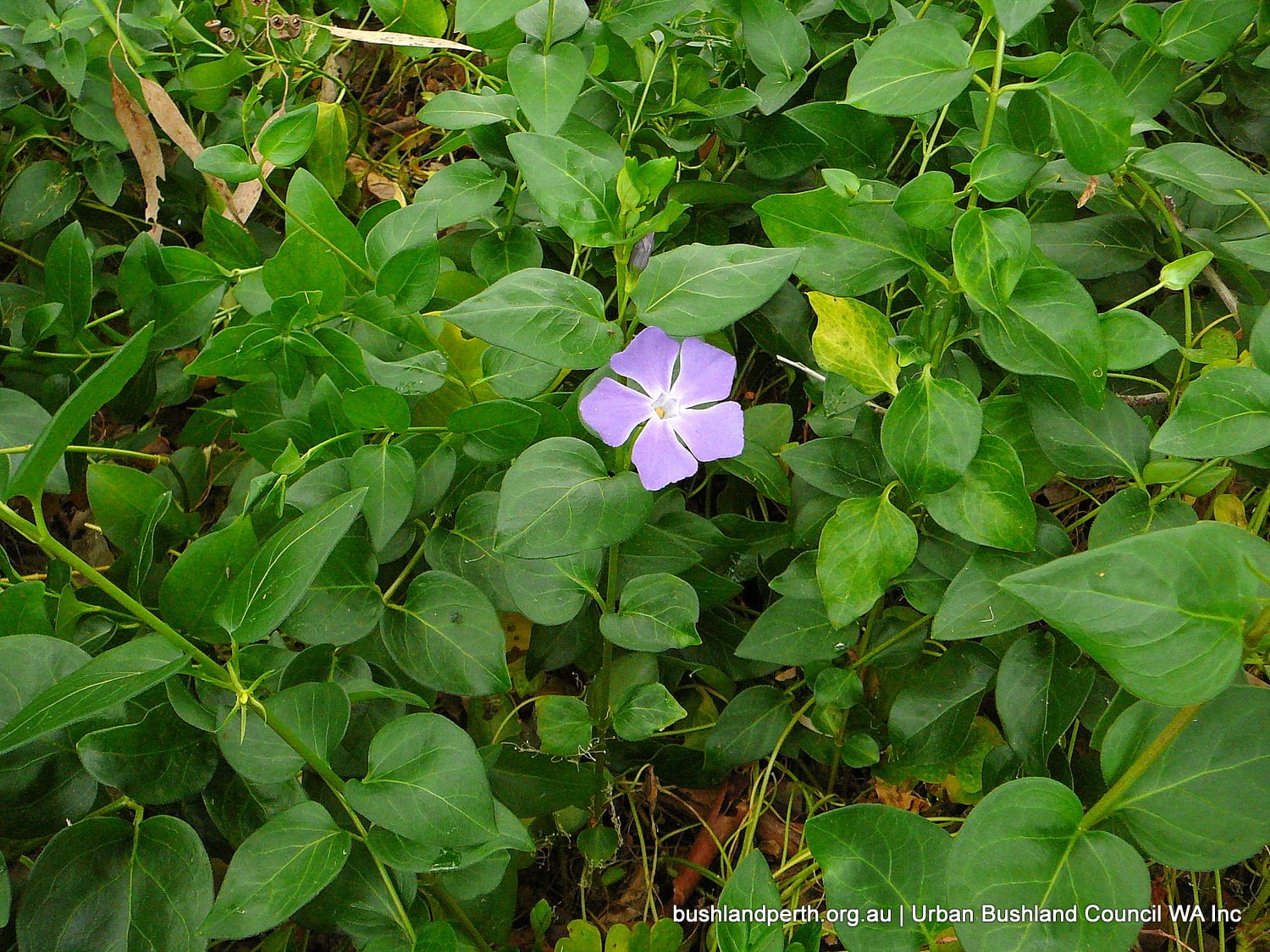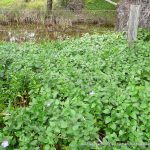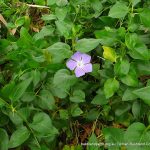Blue Periwinkle

Common name
Blue Periwinkle
Scientific Name
Vinca major
Type of plant
Uncategorised
About this weed
This native from the Mediterranean Region originally escaped from gardens and has now invaded shady creek lines and disturbed bushland. It is a perennial creeper that can form dense mats as any stems that come in contact with soil can root. It has large blue solitary flowers that appear in winter and spring.
Description
Blue Periwinkle is a scrambling creeper reaching about 0.5 m in height. Reproduction is usually by stem fragments and stolons. The seed rarely matures.
Impact on Bushland
It can cause acute disruption of ecological processes as it dominates and/or significantly alters vegetation structure, composition and function of ecosystems.
Location
This weed has naturalised in disturbed areas of the South-West Province, usually in wetter areas.
Priority for removal
High: may become a major threat to conservation values anywhere it has taken hold.
Management (hand)
Hand pull small infestations, being careful not to leave stem fragments behind. Can be manually removed any time.
Management (herbicide)
Spray larger areas with 2 % Glyphosate + Pulse® 2 mL/L; spray when plants have approximately 5 cm new growth in 8-12 weeks – repeat applications will be required. Read the manufacturers’ labels and material safety data sheets before using herbicides. Best months for optimal spraying are December to April.
Flowering month/s
All year
Flower colour/s
Blue
Information source
https://florabase.dpaw.wa.gov.au/browse/profile/6575
Additional information
https://florabase.dpaw.wa.gov.au/weeds/swanweeds/
Hussey, B.M.J., Keighery, G.J., Dodd, J., Lloyd, S.G. and Cousens, R.D. (2007) Western weeds. A guide to the weeds of Western Australia, Second Edition, The Weeds Society of Western Australia, Victoria Park, Western Australia.


